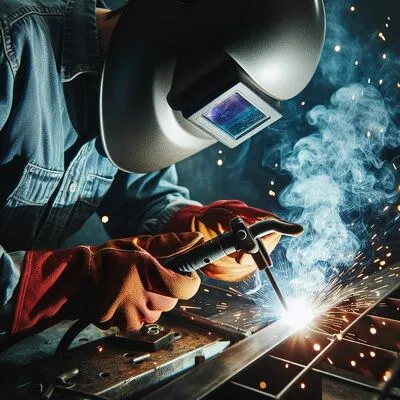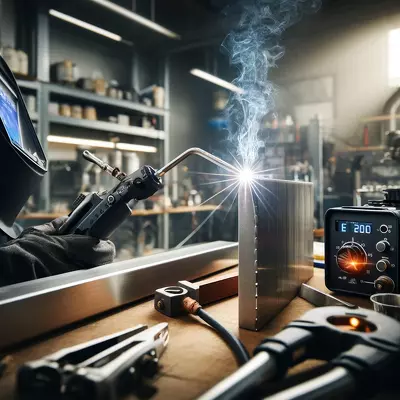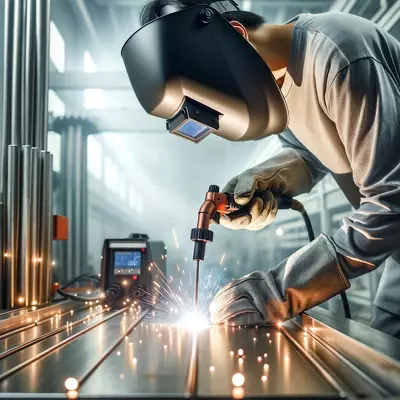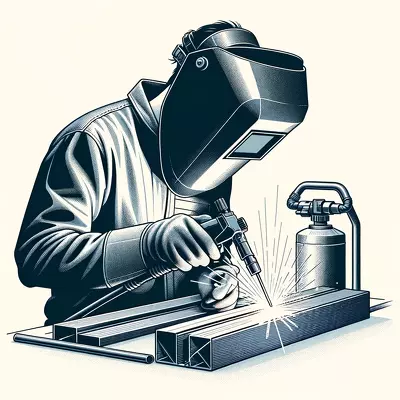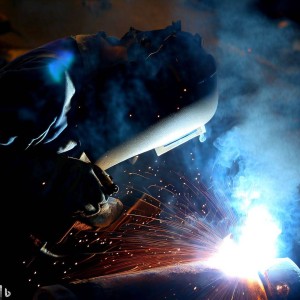Beyond the Spark: How the Right Gas Transforms MIG Welding
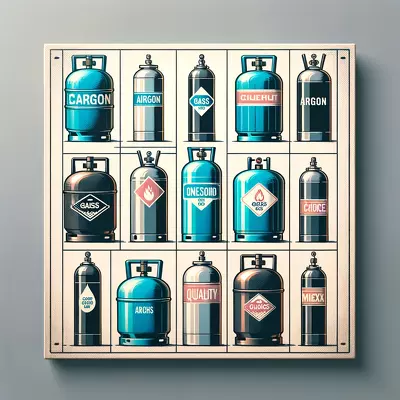
Metal Inert Gas (MIG) welding, a popular method for joining metals, relies on a shielding gas to protect the weld pool from atmospheric contamination. This gas ensures a clean, strong weld by preventing oxidation during the welding process. The choice of gas can vary based on the materials being welded and the desired properties of the weld, with common options including argon, carbon dioxide, and mixtures of the two, each offering distinct benefits for different welding scenarios.
I. Introduction to MIG Welding
A. Overview of the MIG Welding Process
Metal Inert Gas (MIG) welding, a cornerstone of modern fabrication, employs a wire electrode and shielding gas to create strong, durable joins between metal pieces. This process is revered for its efficiency and versatility, making it a preferred method across various industries, from automotive repair to construction.
B. Importance of Shielding Gas in MIG Welding
The role of shielding gas in MIG welding must be balanced. It serves to protect the weld area from atmospheric gases such as oxygen and nitrogen, which can compromise the integrity and appearance of the weld. The choice of gas influences the welding process’s overall efficiency, quality, and cost.
C. Factors Influencing the Choice of Shielding Gas
Several factors guide the selection of a shielding gas in MIG welding, including the type of material being welded, the desired properties of the weld, and considerations of cost and availability. Understanding these factors is crucial for achieving optimal welding outcomes.
II. Types of Shielding Gases Used in MIG Welding
A. Argon and Its Benefits
Argon, a noble gas, is a popular choice for MIG welding due to its ability to produce high-quality, clean welds with minimal spatter. Its versatility makes it suitable for welding a wide range of materials, including aluminum, steel, and non-ferrous metals.
B. Carbon Dioxide: Cost-Effective Option
Carbon dioxide is another commonly used shielding gas, prized for its cost-effectiveness and deep penetration qualities. However, it can lead to more spatter compared to argon and is typically used for welding thicker materials.
C. Mixed Gases: Combining the Best of Both Worlds
Mixtures of argon and carbon dioxide are often used to harness the benefits of both gases. These mixtures provide a balance between weld quality and cost, making them suitable for a broad spectrum of MIG welding applications.
D. Specialty Gases for Specific Applications
For specialized welding tasks, gases such as helium, oxygen, and others may be added to the mix. These specialty gases are selected for their unique properties, which can enhance certain aspects of the welding process, such as weld penetration, speed, and appearance.
III. Selecting the Right Shielding Gas
A. Considerations Based on Material Type
The material to be welded plays a significant role in the choice of shielding gas. For instance, non-ferrous metals like aluminum often require argon for its superior cleaning action, whereas steels can be welded effectively with carbon dioxide or mixed gases.
B. Impact on Weld Quality and Appearance
The selected shielding gas directly affects the weld’s quality and appearance. Argon-based gases tend to produce smoother, cleaner welds, while carbon dioxide may result in increased spatter but deeper penetration.
C. Cost and Availability
Economic factors and the availability of gases can also influence the choice. While argon and its mixtures may offer superior welding quality, carbon dioxide’s lower cost, and widespread availability make it a viable option for many applications.
IV. How to Use Shielding Gases in MIG Welding
A. Setting Up the Welding Equipment
Proper setup of the welding equipment is essential for the effective use of shielding gases. This includes securing the gas cylinder, connecting the regulator, and ensuring the welding machine settings are optimized for the specific gas and welding task.
B. Adjusting Gas Flow Rates for Optimal Performance
The flow rate of the shielding gas needs to be adjusted according to the welding conditions. Too low a flow rate can lead to inadequate protection of the weld pool. At the same time, too high a rate can result in unnecessary gas consumption and turbulence that might introduce atmospheric contamination.
C. Safety Precautions When Handling Welding Gases
Handling welding gases requires adherence to safety protocols to prevent accidents. This includes storing gas cylinders securely, using the correct equipment for gas handling, and ensuring the work area is well-ventilated to avoid the accumulation of potentially hazardous gases.
V. FAQs
Q: What is the most commonly used gas for MIG welding?
A: Argon and carbon dioxide, along with their mixtures, are the most commonly used gases for MIG welding.
Q: Can I use any gas for MIG welding any material?
A: No, the choice of shielding gas depends on the material being welded and the desired properties of the weld.
Q: Is it possible to MIG weld without a shielding gas?
A: MIG welding technically requires a shielding gas to protect the weld pool. However, flux-cored arc welding (FCAW), a related process, does not require an external shielding gas.
Q: How does the choice of shielding gas affect the welding speed?
A: The choice of shielding gas can impact the welding speed, with certain gases enabling faster welding speeds due to their properties.
Q: What are the safety concerns when using shielding gases in MIG welding?
A: Safety concerns include ensuring proper ventilation to avoid gas accumulation, correct storage and handling of gas cylinders, and using the appropriate equipment to prevent leaks.
Q: How do I choose the right gas mixture for my welding project?
A: The right gas mixture depends on the material, the desired weld properties, and considerations such as cost and availability. Consulting with welding experts or suppliers can help you make an informed choice.
Q: What is the difference between AC and DC welding?
A: AC (Alternating Current) and DC (Direct Current) welding refer to the type of electrical current used. DC welding offers stable arcs and is preferred for most applications, while AC welding is used in specific cases, such as welding magnetized materials.
VI. Conclusion
A. The Role of Shielding Gas in Achieving Quality Welds
The choice of shielding gas is pivotal in MIG welding, directly influencing the quality, appearance, and integrity of the weld. Selecting the appropriate gas based on the material and welding requirements ensures optimal outcomes.
B. Making an Informed Choice for Your Welding Needs
Understanding the properties and applications of different shielding gases enables welders to make informed choices that enhance their welding projects’ efficiency, cost-effectiveness, and quality.
VII. Suggested Readings
Before diving deeper into the world of MIG welding and its intricacies, exploring further resources can enrich your understanding and skills. The following books are valuable for both novices and seasoned professionals looking to refine their knowledge.
- “Welding: Principles and Applications” by Larry Jeffus: This comprehensive guide covers a wide range of welding techniques, including detailed discussions on the use of shielding gases in MIG welding.
- “The Welder’s Handbook: A Complete Guide to MIG, TIG, Arc & Oxyacetylene Welding” by Richard Finch: An essential resource for anyone interested in welding, this book provides practical advice and insights into selecting shielding gases and other welding essentials.
- “Modern Welding Technology” by Howard B. Cary: Offering an in-depth look at the latest advancements in welding technology, this book includes discussions on the selection and application of shielding gases in various welding processes.
- “Metals and How to Weld Them” by T. B. Jefferson and Gorham Woods: This classic text, aimed at understanding the metallurgy behind welding, also touches on the critical role of shielding gases in achieving sound welds.
After exploring these resources, you’ll be better equipped to navigate the complexities of MIG welding and make choices that enhance the quality and efficiency of your welding projects. Whether you’re a student, hobbyist, or professional, these readings will deepen your understanding and appreciation of the art and science of welding.

